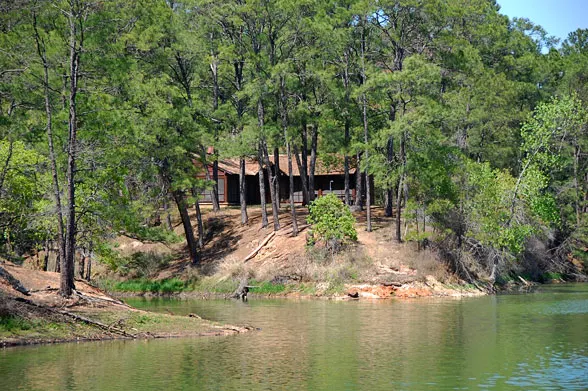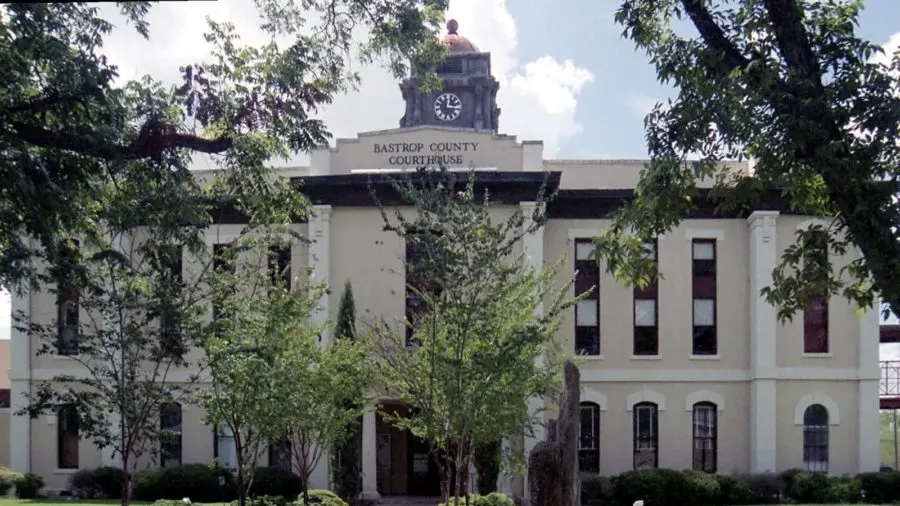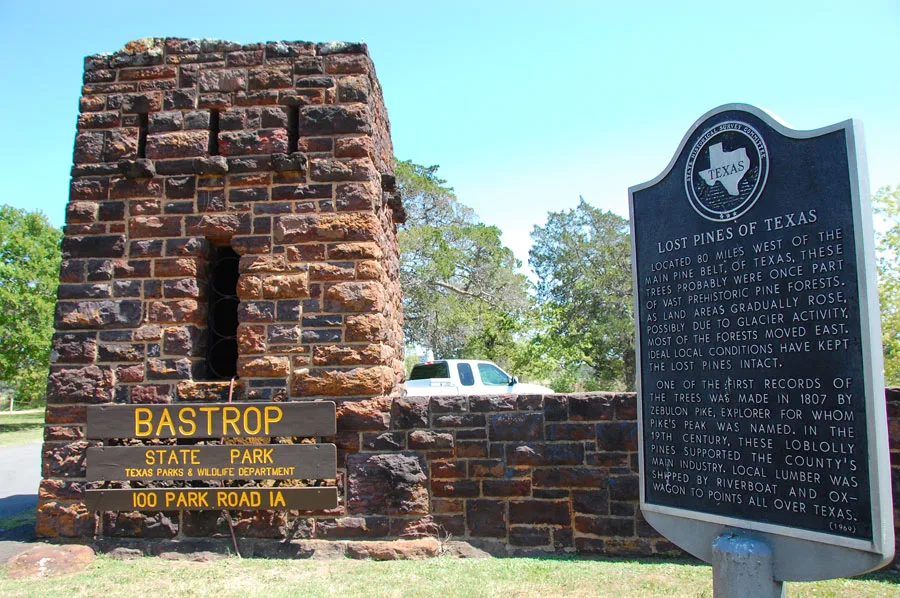Bastrop, located southeast of Austin and near the city’s international airport, is best known for its unique vegetation. Unlike the juniper-dotted hills to the west or the rolling farmland to the east, the Bastrop area is surrounded by a pine forest called Lost Pines, the westernmost stand of loblolly pines in America. It is believed that these trees were once part of the forests of East Texas, but were separated by climactic changes over the last 10,000 years.
Today the verdant community is favored by outdoor lovers because of its two state parks and also the Colorado River, which winds through the heart of downtown. Canoe rentals and guided trips along the river are available. Shoppers enjoy the quiet country atmosphere still found in the downtown area.

Table of Contents
How Did Bastrop Get Its Name?
The community also holds the honor as one of the oldest settlements in the state, built in 1829 along the Camino Real (or “King’s Highway”), a road also known as the Old San Antonio Road. This was the western edge of the “Little Colony” established by Stephen F. Austin. Settlers came by the wagonload from around the country to claim a share of this fertile land and to establish a home in this dangerous territory.

At that time, the community was called Mina, named for the Spanish revolutionary, Francisco Xavier Mina. Nearly a decade later, the name was changed to honor the Baron of Bastrop, a friend of Austin’s.
The town grew, but sadly most of its early structures were lost in a massive fire in 1862. The downtown was rebuilt with Victorian structures, and today 130 of those historic buildings remain, including 31 Texas Medallion homes.
What to do in Bastrop

Bastrop State Park
According to legend, the Lost Pines of Bastrop were a gift from an Indian brave to his new bride, homesick for East Texas. Scientists provide a less romantic explanation: the coniferous trees were left in central Texas when a shallow sea receded 80 million years ago. A prehistoric forest thrived across much of the state, but when conditions changed only an island of loblolly pines remained.
Regardless of the explanation, one thing’s for certain: the Lost Pines are far from lost. This forest enclave southeast of Austin is one of the most visited parks in the Lone Star state. Although extremely damaged by one of the most costly fires in Texas history in 2011, the park has is undergoing regrowth.
Some of the most popular features of the park are the cabins, built by the Civilian Conservation Corps in the late 1930s. Two work companies came to the newly created park to plant pine seedlings and to construct buildings using native red sandstone. Paid about one dollar a day, these skilled craftsmen left a legacy of rustic style cabins furnished with hand crafted tables and carved fireplace mantels.
For all its man-made attractions, this park is even richer in natural treasures. Birders seek out pine siskins, pileated woodpeckers, and painted buntings. Hikers walk a quiet eight and a half mile trail, the sounds of campers and picnickers dampened by a carpet of pine needles.
The park is also home to a unique resident: the Houston Toad. This endangered species has brought widespread attention to the park. To help track the toads, the park has implanted individuals with microchips; thus far, over 600 toads have been tagged. All future expansion plans for the park take the Houston toad into consideration.
Buescher State Park
Bastrop State Park neighbors Buescher (pronounced Bisher) State Park, but the two boast different environments. The number of pine trees diminishes as you head east on Park Road 1, when oaks begin to dominate the landscape.
From Bastrop, 12 miles southeast via Rte. 71, then northeast on FM 153, to Park Rd. 1. Just a short distance from Bastrop State Park, this park is accessible either through Bastrop or nearby Smithville. Buesher offers camping, screened shelters, fishing, a playground, and a 7.7-mile hiking trail.
McKinney Roughs LCRA Preserve
Eight miles west of Bastrop at 1884 Hwy. 71 or 13 miles east of the Austin airport. This fairly new park is a favorite with hikers, canoeists, and equestrians alike. The 1100-acre park preserves several ecosystems: the Post Oak Savannah, Blackland Prairie, East Texas Piney Woods, and Central Texas Plateau. The park also offers several types of guided river trips along its two miles of river; look for trips from March through October.
